FEATURE… Climate Change: How windstorms ravage schools, worship centre in Benue, leaving children’s education in peril
In the aftermath of a destructive windstorm that swept through communities in Logo, Benue State, Nigeria in May 2024, the once vibrant schoolyards and places of worship lay in ruin. For 11-year-old Shater Kaanan and his peers, the storm brought not just physical devastation but also halted their paths to education.
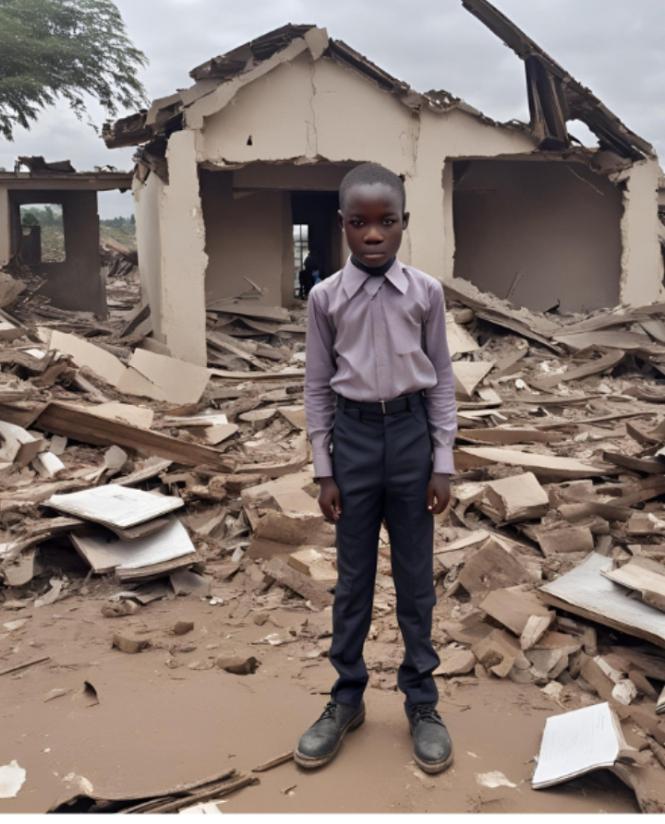
Resilience amid ruins: Shater’s story, captured with Canva.
Shater, an ambitious young boy with dreams of becoming an engineer, now finds himself confined to the remnants of his home, unable to attend school as the windstorm tore apart the very church building where he once eagerly learned. His days are now spent amidst debris and uncertainty, his future now clouded by the unpredictability of nature’s wrath. The storm not only destroyed infrastructure but also shattered the hopes of many children like Shater who now face an uncertain future without access to education.
“Our teacher asked us to stay at home because there’s no place to sit and learn,” Shater narrated.
As Shater peers out at the scarred landscape that was once his playground, he is not alone in his plight. Many of his friends and classmates share similar stories of displacement and despair. Without schools to attend and with places of worship also ravaged, their sense of community and stability has been profoundly shaken.
Shater Kaanan is a primary 4 pupil of NKST Primary School, Pagher, Logo LGA. The school which was established in 1976, has been without a proper structure for over two decades, relying instead on a church building that fell victim to the recent natural disaster.
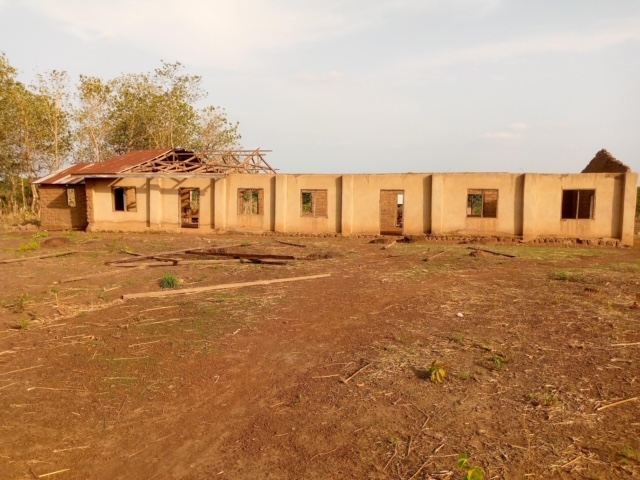
A shattered church where Shater and his peers once learned.
I instructed pupils to stay at home – Headteacher
Gregory Jigba, the headteacher of NKST Primary School, Pagher, is facing a daunting challenge, in the aftermath of a devastating wind storm that swept through the community,
“I can’t gather the pupils anymore. There’s no shelter,” lamented Gregory, who has been leading the school for over six years. His distress is palpable as he surveys the church debris that once housed the makeshift classrooms. With the church now in ruins, the school is left without any functional space to continue education.
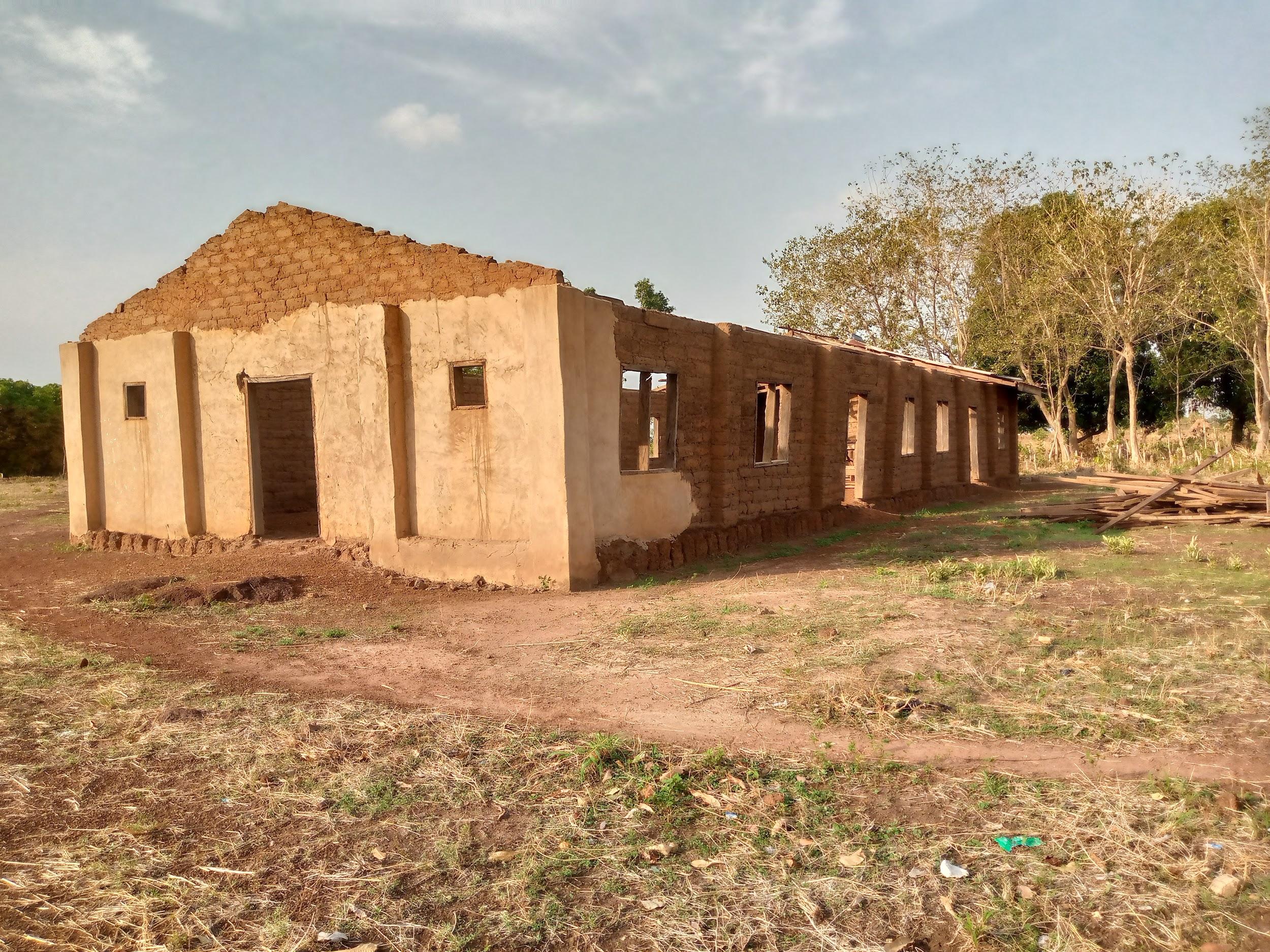
Side View of the shattered church structure.
Gregory expressed frustration towards the government, wondering aloud why they have not intervened to build the school since its structure collapsed in 1999. As the only government teacher in the school, his responsibilities have only grown more challenging since the windstorm struck.
“The government needs to step in. These children deserve a proper education,” he emphasized, highlighting the urgent need for support to restore educational services.
Kaanan Torazege, a parent whose children are at home, echoed Gregory’s concerns, emphasizing the importance of education for his children’s future. “This school is the heart of our community. Without it, all my six children are left without hope,” remarked Kaanan, visibly concerned about the impact of prolonged disruptions to his children’s schooling.
LGEA Primary school, Abeda reeled after devastating windstorm
Sixteen kilometers from Pagher, LGEA Primary School, Abeda stands in ruins. The fierce windstorm that tore through Logo stripped away the school’s roofing zinc and left the once bustling primary six classroom in disarray. Pupils, now forced to relocate to a makeshift classroom, find themselves grappling with inadequate facilities and unsanitary conditions.
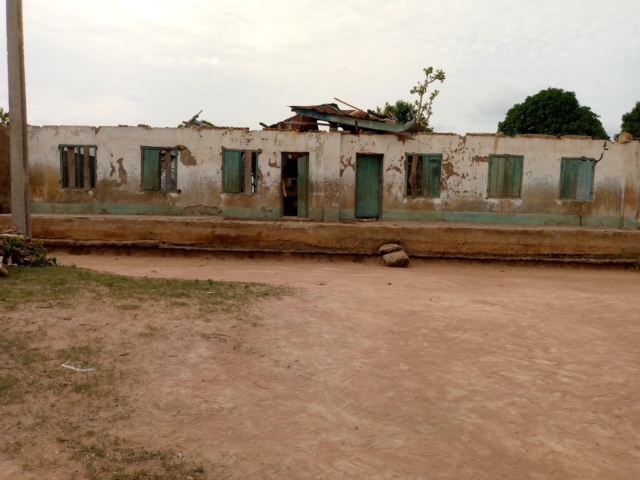
Remains of the Class Six, LGEA Primary School Abeda.
A class six teacher who identified himself as Yinamga said, “The storm took away our roof and destroyed all the chairs in our class,” He expressed concern over the plight of his pupils, who are now compelled to sit on the dusty floor amidst debris. “The building that was damaged was the only one equipped with proper teaching materials,” he added somberly.
This reporter observed that the interim classroom hastily arranged for the displaced students lacks basic amenities such as proper seating and a plastered floor, exacerbating the already challenging learning environment. Dust pervades the air, making teaching and studying difficult. “The conditions here are not conducive for learning. Our children deserve better,” Yinamga emphasized, urging swift government intervention to rebuild the school.
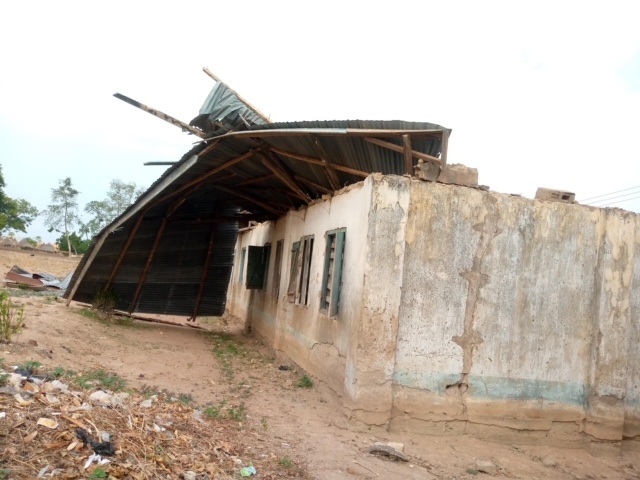
Side view: Class Six LGEA Primary School, Abeda
Frustrated, 12-year-old Ngohile Yongu, a class six pupil, lamented that she and her classmates are located in a class with limited facilities. “It’s hard to learn without proper desks or boards,” she complained.
Windstorm ravages churches in Iorshagher: Pastor appeals for help
In a devastating turn of events in Logo, Benue State, Ephraim Ibunde, pastor in-charge of the Universal Reform Christian Church in Iorshagher is also grappling with the aftermath of a fierce windstorm that wreaked havoc on his ministry. Recounting the harrowing experience, Ibunde described how the tranquil rain suddenly gave way to a ferocious windstorm of unprecedented magnitude.
“I was inside when the windstorm began. It came with such speed and force that I feared for my safety,” he recalled. “Trees were uprooted, and I narrowly escaped being hit by a falling trunk. The wind tossed our church twice before finally bringing it down.”
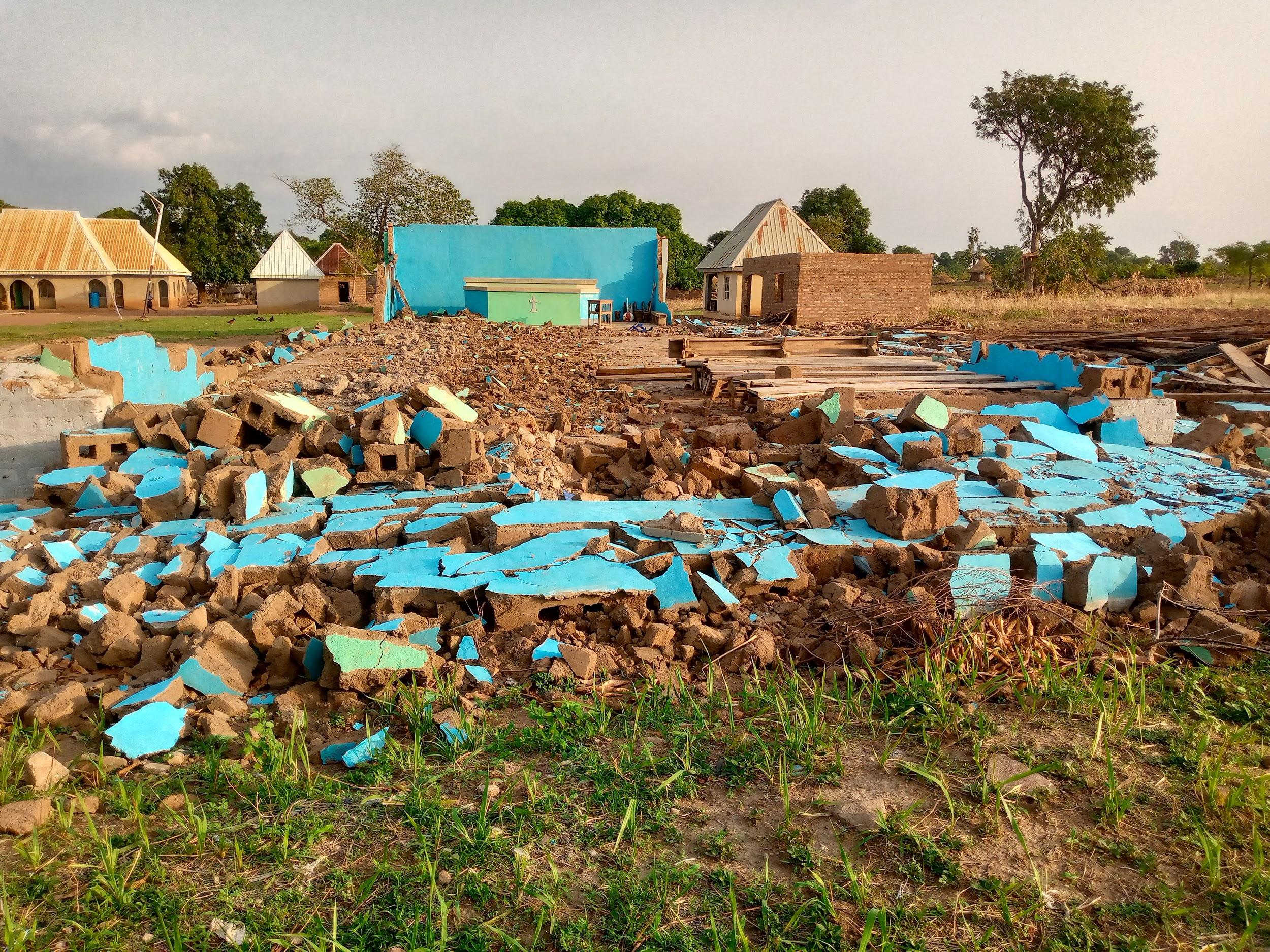
URCC Iorshagher, Logo
The destruction was extensive, with Mr Ibunde estimating losses totaling between 16 to 17 million naira. “Five of our outstation churches, including Mbashange, Zanzan, Mbaabur, and Iko, along with our central church in Iorshagher, were completely destroyed,” he lamented, highlighting the significant impact on his congregation.
READ ALSO:INVESTIGATION: Benue communities, residents in pains as govt neglects PHCs
Reflecting on his 12 years in the community, the pastor noted that such a catastrophic storm was unprecedented, attributing it to changing climate conditions. “Even the rain patterns have become erratic,” he observed. “Our communities have lost many trees, making us vulnerable to such disasters.”
The consequences extend beyond physical damage, affecting pastors psychologically and financially. “This has been a profound blow. I may even have to forgo my church salary to fund the rebuilding efforts,” he confessed, underscoring the personal toll of the disaster.
In a plea for assistance, Ibunde called upon the government and compassionate individuals to support their recovery efforts. “We urgently need help to rebuild our churches and restore hope to our community,” he urged.
Logo education secretary appeals for urgent government intervention
When contacted, Henry Oraya, the Education Secretary of Logo Local Government Area, confirmed that several schools, including LGEA Primary Audu, NKST Primary School Abuur, LGEA Primary Abukpera, LGEA Primary Tse-Ikyanyon, and RCM Primary School Tse-Nge, were severely affected by the natural disaster.
According to Oraya, his office promptly received reports from the affected schools and forwarded them, along with detailed photographs, to the Benue State Universal Basic Education Board (SUBEB), noting that it has been nearly a month since the complaints were lodged.
“As local government education secretary, our role is to escalate such issues to higher authorities,” Oraya explained. “We lack the authority to undertake projects independently unless directed by the state government. Our best recourse currently is to advise on temporary measures while awaiting support.”
Mr Oraya highlighted the dire state of educational infrastructure within the local government, citing instances where only a handful of projects are allocated despite the overwhelming need across more than 200 schools. He passionately appealed to the government for urgent intervention, emphasizing the critical need to address the infrastructural challenges exacerbated by the recent windstorm.
“We urgently need the state government’s assistance to rehabilitate and reconstruct these schools,” Oraya urged. “The education of Logo children is at stake, and without swift action, their learning environment will continue to deteriorate.”
Dashed hopes: Benue SUBEB keeps mum
The chairman,SUBEB, Grace Adagba, was notably absent when this reporter visited the board’s headquarters in Makurdi, the state capital to get her perspective on the agency’s response to affected schools. Mrs Adagba’s absence leaves many unanswered questions about the board’s efforts to aid affected schools.
Akese Emmanuella, the Information Officer at SUBEB, informed this reporter that without explicit consent from Adagba, no information could be provided from the media unit housed under her office. The media unit’s stance, underlining their inability to comment without Adagba’s authorization, underscores a tight control over information dissemination within the agency.
Messages sent to the agency’s official email were neither returned nor replied, despite the urgency in understanding SUBEB’s initiatives in the wake of the storm. The situation has prompted further inquiries into the transparency and accessibility of information at SUBEB, particularly in times of crisis when public scrutiny and media coverage are needed.
Concerns as rampant deforestation takes center stage.
Peva Tor, the village head in Logo, believes the catastrophe was exacerbated by the extensive clearing of forests in the affected communities.
“At one time, falling trees were a serious offense, respected by all,” Peva recalled, his weathered face reflecting decades of wisdom. “Now, illegal logging has ravaged our once vast forests, leaving us vulnerable to such calamities.”
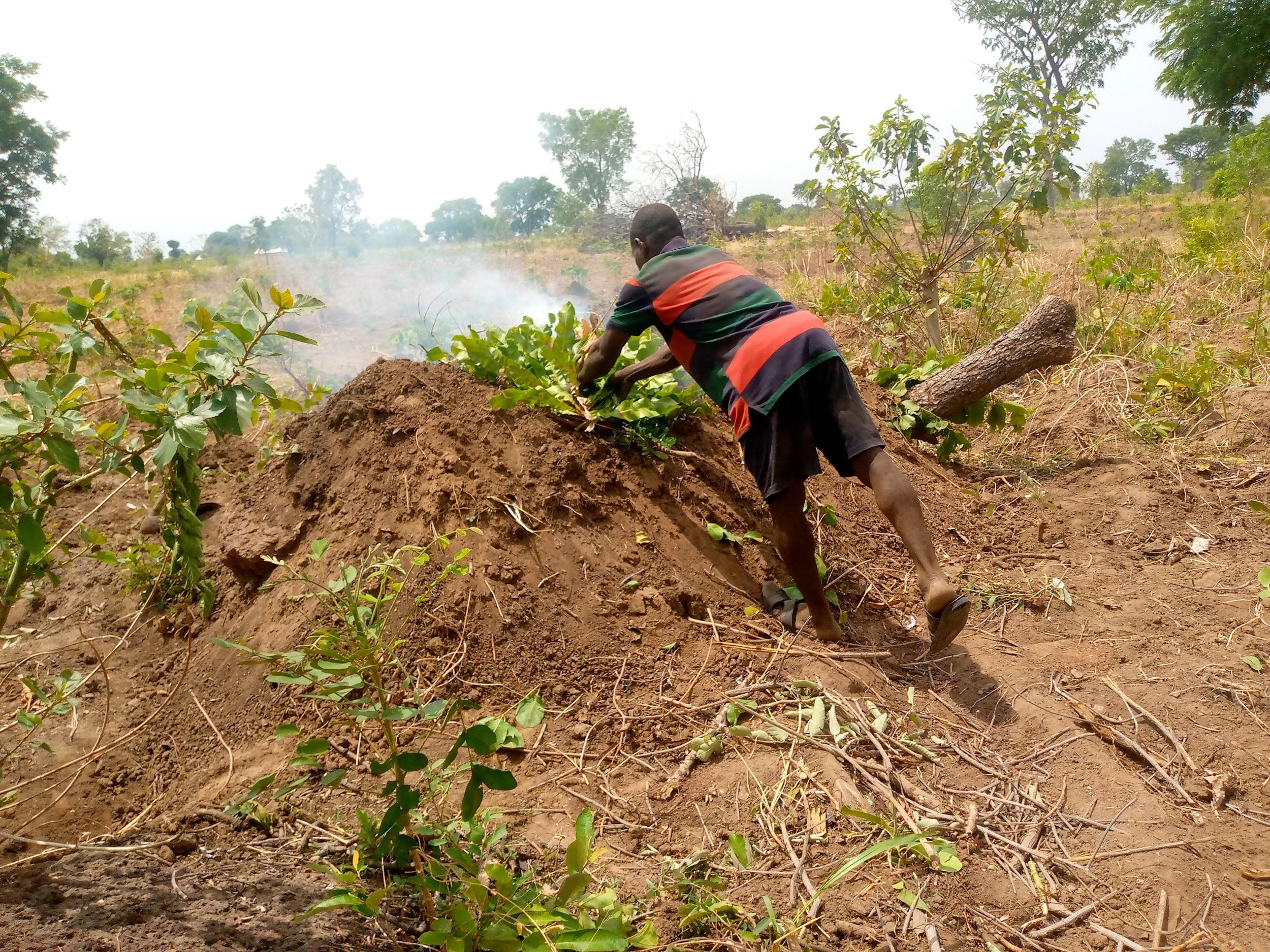
Charcoal makers amid ravaging windstorm in Logo
In his youth, Peva reminisced, bush burning and hunting were strictly regulated activities, carried out only with the elders’ consent. Over the years, these traditions eroded, contributing to the disappearance of the community’s lush green canopy.
“The change in our climate can be directly attributed to these unsustainable practices,” Mr Tor lamented, gesturing towards the fallen remnants of a local school and several houses. “We must revive our respect for nature and enforce laws to protect what remains of our environment.”
Deforestation linked to severe windstorm devastation in Benue communities
In an exclusive interview with Peter Gever, Director of Forestry at the Ministry of Water Resources, Environment, and Climate Change, key insights were revealed regarding the connection between deforestation and the severity of the recent disaster.
Mr. Gever highlighted a stark reality that the Department of Forestry, tasked with managing and preserving forest resources, faces significant challenges. “We currently have only 41 staff members,” Gever lamented, emphasizing a limited capacity to monitor and protect the state’s forests effectively.
One critical issue raised by Gever was the insufficient presence of Divisional Forest Officers. In an ideal scenario, each of Benue State’s 276 council wards should have a dedicated officer, yet there are only 41 officers spread across 23 local government areas. This scarcity exacerbates the department’s struggle to combat illegal logging, which directly contributes to deforestation.

Loggers transporting charcoal from Buruku forests to Gboko, Benue State
Regarding the recent windstorm, Gever explained, “Trees act as natural windbreakers. Due to rampant illegal logging, there are fewer trees to mitigate the impact of such storms.” This insight underscores the environmental repercussions of deforestation, amplifying the destructive potential of natural disasters.
Gever further highlighted initiatives led by the Ministry of Water Resources, Environment and Climate Change, in collaboration with the Nigeria Conservation Foundation and ACReSAL, which have seen the planting of over seventy thousand trees from 2023 to 2024. These efforts, he believes, are crucial steps towards mitigating the effects of deforestation and enhancing the resilience of local communities.
“The current administration has also established a dedicated department of Climate Change within the ministry. This department is tasked with developing strategies to tackle climate-related challenges comprehensively,” he said, reflecting a proactive approach to environmental governance.
The Forestry Director, however, emphasized that financial constraints remain a significant hurdle for the Forestry Department. “We lack the financial strength needed to carry out more effective conservation and reforestation efforts,” he admitted, underscoring the need for increased support and resources from governmental and non-governmental sectors alike.
Looking ahead, Gever has advocated for an increase in staffing, proposing an additional 874 personnel to bolster the department’s capacity to protect Benue State’s forests effectively.
How forests contribute to a sustainable environment
Goal 15 of the SDGs aims to protect, restore, and promote the sustainable use of terrestrial ecosystems and forests, to halt and reverse land degradation, and to put a stop to loss in biodiversity.
Forests are crucial for sustainable development. Covering almost one third (31 percent) of the Earth’s land surface, they offer a habitat to over 80 percent of all terrestrial species and are key to preserving biodiversity. Forested watersheds and wetlands supply three quarters of all accessible freshwater in the world. Worldwide an estimated 300 to 350 million people live in or close to forests and largely depend on them for their livelihoods, and over a billion people rely on forests for employment, forest products, and contributions to livelihoods and income. Many of those living in extreme poverty are highly dependent on forests for their livelihood.
Forests also play a key role in the mitigation of climate change, removing an estimated 16 billion tonnes of carbon dioxide (CO2) from the atmosphere annually, equaling about half of the annual CO2 released from burning fossil fuels.
By: Manasseh Mbachii



